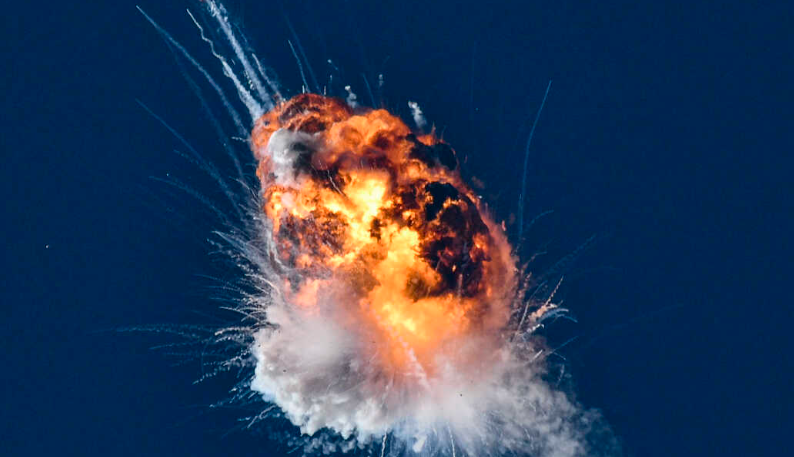SpaceX initiated the launch of its large-scale Starship rocket, yet encountered setbacks as both the booster and the spacecraft were lost in dual explosions just minutes into Saturday’s test flight.
The spacecraft achieved space after taking off from South Texas, but communication was abruptly severed. According to SpaceX officials, it seems that the ship’s self-destruct mechanism caused its destruction over the Gulf of Mexico.
A few moments prior, the detached booster had detonated above the Gulf. However, at that point, its purpose had been fulfilled.
The demonstration on Saturday endured for approximately eight minutes, roughly twice the duration of the initial test in April, which similarly concluded with an explosion. The most recent flight concluded as the ship’s six engines were nearing the completion of their firing sequence to set it on a global trajectory.
Standing at an impressive height of nearly 400 feet (121 meters), Starship holds the distinction of being the largest and most potent rocket ever constructed, designed with the objective of transporting individuals to both the moon and Mars.
Spokesperson John Insprucker from SpaceX pointed out that on this occasion, all 33 booster engines operated according to the design, in contrast to the previous attempt. Additionally, the booster smoothly disconnected from the spacecraft, which ascended to an altitude of 92 miles (148 kilometers).
“The truly crowning achievement today was the successful liftoff.”
Elon Musk, the founder of SpaceX, observed the launch from the control center situated at the southern tip of Texas, near the Mexico border and Boca Chica Beach. Meanwhile, at the company’s headquarters in Hawthorne, California, employees expressed excitement as Starship ascended during the early hours of the day. However, the atmosphere in the room became somber once it became evident that the spaceship had been lost.
SpaceX’s objective was to reach an altitude of 150 miles (240 kilometers), a height sufficient to propel the bullet-shaped spacecraft on a global trajectory before ultimately descending into the Pacific near Hawaii approximately 1 1/2 hours after liftoff, falling short of completing a full orbit.
After the flight demonstration in April, SpaceX implemented numerous enhancements to both the rocket and the launch pad. On Wednesday, the Federal Aviation Administration granted approval for the rocket’s flight, verifying that all safety and environmental considerations had been addressed.
Following Saturday’s launch, the FAA stated that there were no reported injuries or public damage, and an investigation is in progress to identify the root cause of the incident. The FAA added that SpaceX is prohibited from conducting another Starship launch until the review is concluded, and necessary corrections are implemented.
NASA relies on Starship to deliver astronauts to the moon by the end of 2025 or shortly thereafter. In pursuit of this goal, the space agency has granted SpaceX a $3 billion contract. This involves transferring astronauts from the Orion capsule to Starship while in lunar orbit before descending to the moon’s surface.
Upon the successful validation of Starship, Musk intends to utilize these entirely reusable mega rockets for deploying satellites into Earth’s orbit, transporting equipment and personnel to the moon, and ultimately facilitating missions to Mars.













